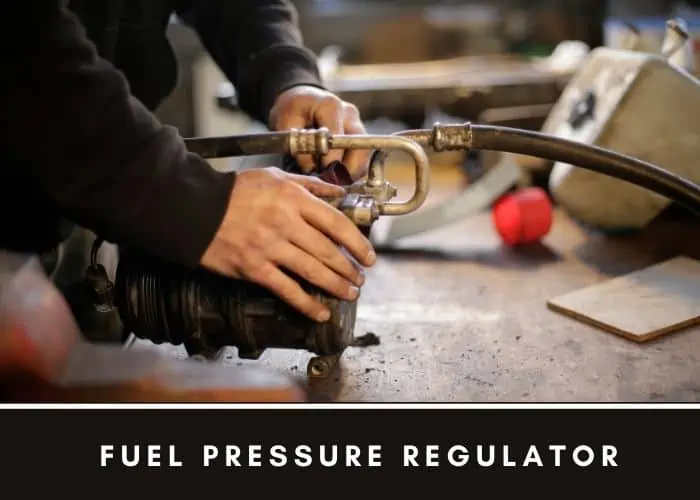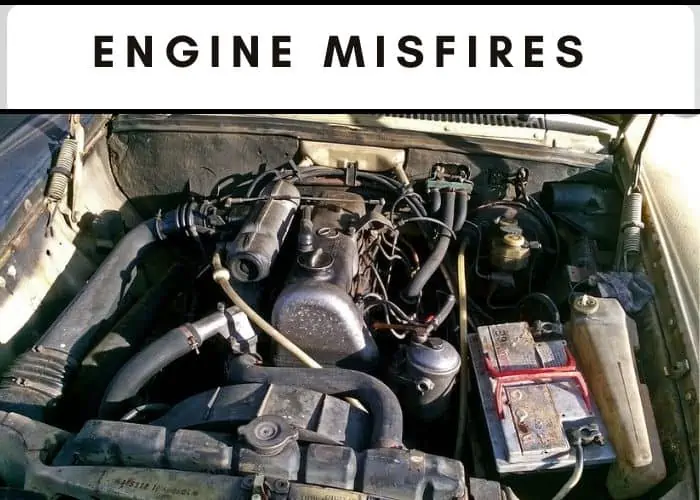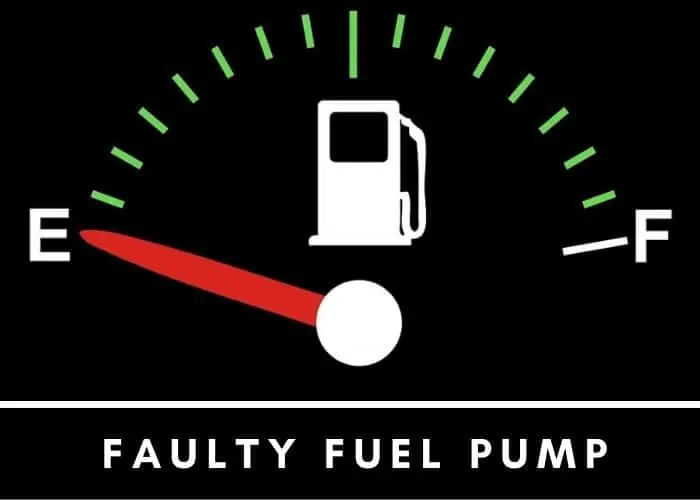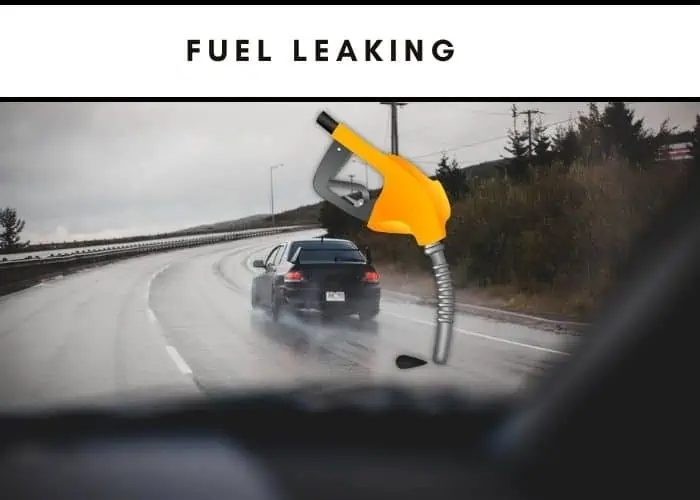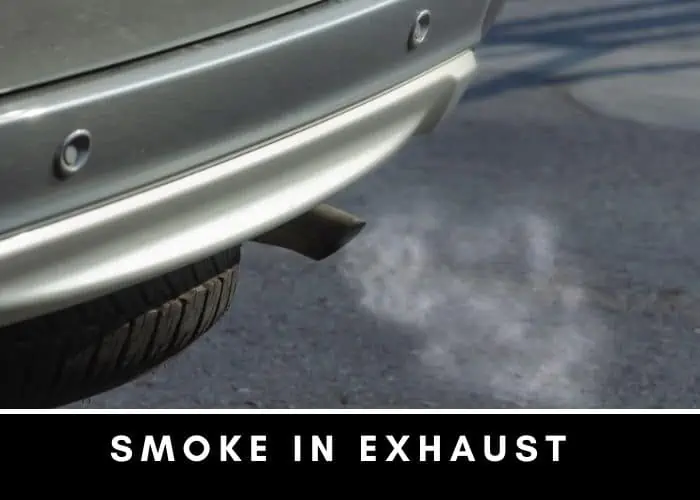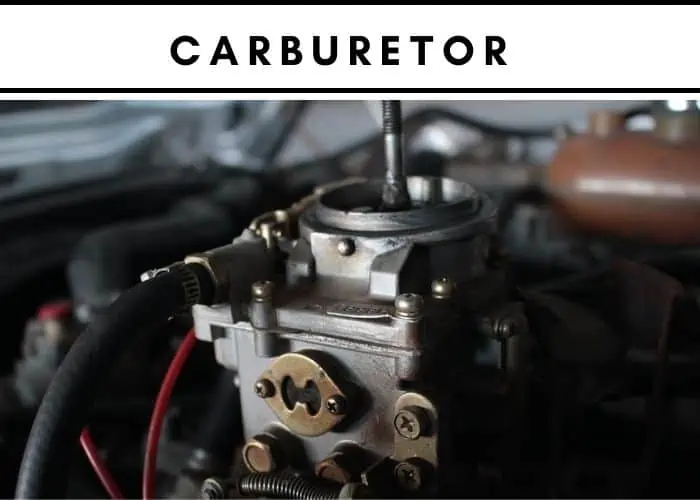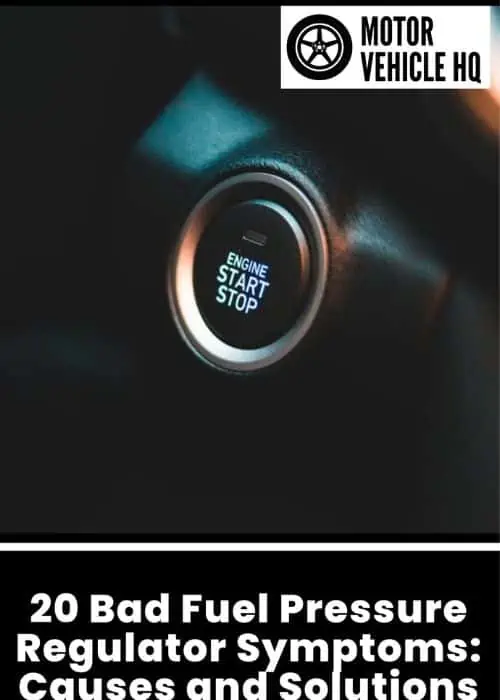A faulty fuel pressure regulator is one of the most common reasons for a vehicle’s engine performance.
It can lead to different problems, including a significant increase in fuel consumption and even stalling or engine damage.
The bad fuel pressure regulator symptoms are usually hard to detect and may be confused with other issues with similar symptoms.
The regulator monitors the fuel pressure in the fuel rail, so your injectors are spraying at a constant pressure.
What Is a Fuel Pressure Regulator?
A fuel pressure regulator is a part that controls how much fuel is entering your engine. If your fuel pressure regulator is not functioning properly, you’ll notice several problems with your vehicle.
This guide will show you the symptoms and how to troubleshoot them before it causes too much damage.
Let’s look at 20 bad fuel pressure regulator symptoms, causes, and solutions.
One of the most common reasons for engine miss-fire is due to a faulty fuel regulator.
#1. Rough Engine Idling
Rough engine idling is a common symptom of a fuel pressure regulator. If you encounter this problem, a clogged air filter or fuel filter may be the cause of it, and a bad fuel pressure regulator.
Your engine may also have an issue with its injectors or other components that affect the quality of your fuel supply.
#2. Engine Misses and Misfires
If your engine misses and misfires, it might be a damaged spark plug. The following steps should help you determine whether this is the case:
- Check the spark plugs. If they’re damaged, replace them.
- Check the ignition coil. If it’s damaged, replace it.
- Check the ignition module (aka distributor). If it’s damaged, replace it.
- Try checking your fuel injectors to see if they’re causing problems with the performance and power delivery by having them cleaned or replaced if necessary.
#3. Stalling Engine
A stalling engine is one of the bad fuel pressure regulator symptoms . The regulator may be leaking. It can cause the fuel to run out quickly causing stalling until the pump can supply more fuel.
If you notice your car stalling at idle or when driving, check the pressure regulator first — it’s an easy fix that could prevent you from needing to buy a new part.
You should also check your injectors if you’re experiencing this symptom. A clogged or faulty injector can cause similar problems, but replacing it with another one may not solve the problem..
Instead, look for signs of leakage in your current system and make sure all hoses are secure before wrapping up on these parts.
Ensure that there aren’t any problems with either your fuel pump or its wiring harnesses.
If either one is faulty, then no amount of cleaning or adjustments will help because they won’t be able to provide enough pressure for everything else in line behind them.
If the regulator is faulty, it will not adjust the amount of fuel flowing into your car’s engine properly.
#4. The Engine Idles Roughly
If your vehicle is idling roughly and is difficult for you to drive smoothly, this could be a symptom of a faulty or loose fuel pressure regulator.
The problem may be as simple as a loose hose clamp or a faulty relay switch.
If your vehicle continues running roughly after you’ve tightened up or replaced these parts, then it is likely that other issues need attention before they cause further damage.
#5. Hard Starting
A hard start is when your engine takes a lot of effort to start. If this happens, you may notice that the speed that you press on the gas pedal grows faster with each attempt. You might hear some serious cranking noises during a hard start as well.
Sometimes when a car has an issue with its fuel pressure regulator, it will exhibit these bad fuel pressure regulator symptoms in cold weather.
If you have recently parked your vehicle outdoors during freezing temperatures (or even below freezing), consider waiting until the weather warms up before driving again because ice crystals may be clogging up critical components of its fuel system.
#6. Running Low on Power
Low power from a bad fuel regulator can lead to poor fuel efficiency, fouled spark plugs, and a misfiring engine that black smokes from its tailpipe. A bad catalytic converter may also be to blame for poor fuel efficiency.
If you’re experiencing any of these symptoms, it’s time to have your vehicle inspected by one of the certified technicians.
#7. Fouled Spark Plugs
Spark plugs are electromagnetic devices that ignite the fuel mixture in a cylinder. They’re located in the cylinder head and connected to an ignition coil. Spark plugs designs are ceramic, platinum, or nickel.
A fouled plug generally means that one or more of your cylinders aren’t getting enough spark energy to ignite their fuel mixture properly.
The fuel pump’s primary function is to supply the engine with enough fuel for ignition.
#8. Malfunction in the Fuel Gauge
The fuel gauge can be faulty, inaccurate, or stuck. The fuel gauge may not be accurate due to a bad ground or faulty connection.
If you suspect that your vehicle’s fuel pump is faulty, it will not pick up the pressure from the tank.
You should replace it immediately to avoid any further damage to other components of your engine. It may also cause potential safety issues for yourself and others on the surrounding road.
#9. Fuel Leakage From the Regulator or Fuel Injectors
It is the main symptom of the failed fuel pressure regulator, and if you notice it, likely, you won’t be able to drive much longer without a replacement.
Broken or poorly connected hoses can cause leakage, but overfilling the tank can also cause leaks.
<iframe width=”801″ height=”480″ src=”https://www.youtube.com/embed/eD0ixuUbibE” title=”YouTube video player” frameborder=”0″ allow=”accelerometer; autoplay; clipboard-write; encrypted-media; gyroscope; picture-in-picture” allowfullscreen></iframe>
#10. Bad Catalytic Converter Performance
If a catalytic converter is clogged or damaged, it can’t help the vehicle run well.
A common symptom of a bad O2 sensor is a check engine light that keeps coming on and off or one that stays lit for no reason.
You’ll also notice poor fuel efficiency if you have this problem—e.g., your vehicle gets worse mileage than it used to when it was new.
If you think your O2 sensor might be faulty, have the code read by an auto parts store with an OBD scanner, so they can tell you what the actual issue is (and whether it needs fixing).
An improper adjustment, or wear and tear on the device, allows fuel in your tank to leak into the areas surrounding your tank.
#11. Deteriorated Performance of Oxygen Sensors
A deteriorated oxygen sensor can cause poor performance, reduced fuel economy, and engine damage.
An oxygen sensor is a critical component in the emission control system of your vehicle. It detects the amount of oxygen in your exhaust gas and sends this information to the engine computer, so it can adjust how much fuel to pump into each cylinder, which helps regulate emissions.
If carbon build-up damages or contaminates your vehicle’s oxygen sensors, they won’t be able to do their job properly — and if you don’t replace them soon, you’ll experience some issues.
If your car isn’t performing well — whether it’s hesitation on acceleration or has trouble idling smoothly — take it straight to the car workshop.
The professionals can diagnose the problem for you before it becomes more costly than just replacing one component at a time.
#12. Faulty Accelerator Pump or Carburetor
If the accelerator pump is faulty, it will not deliver sufficient fuel to the engine and send signals to the PCM.
It can cause a slew of problems, including poor acceleration and stalling. Accelerator pumps are vacuum-operated devices that provide fuel to the engine.
They connect to the throttle body (which controls airflow into your engine) and an electronic module called a powertrain control module (PCM) controls them.
You can locate the accelerator pump in the intake manifold; however, some manufacturers have moved them inside their engines as part of a redesign project.
If you suspect that your vehicle’s accelerator pump needs replacing or repair, consult a professional mechanic or technician for help.
#13. Poor Fuel Efficiency
Poor fuel efficiency is a common symptom that a bad fuel pressure regulator can cause. Fuel efficiency is the amount of fuel used to travel a certain distance, and you can measure it in miles per gallon (MPG).
The most common cause of poor fuel efficiency is low fluid levels, but other factors may affect your vehicle’s MPG too.
For example, if you’re not driving at full throttle or accelerating properly while also maintaining speed too slowly, this may cause an increase in fuel consumption over time.
A faulty injection system can also lead to poor combustion within the engine cylinders — meaning less power will be generated during acceleration or deceleration and therefore require more power from your engine to get up to speed again afterward.
The additional requirements generate more heat, which wastes energy through friction between moving parts inside the combustion chamber. It can further reduce efficiency overall.
A faulty fuel regulator can cause strong engine misfires which will result in white, blue or black smoke.
#14. Smoke From the Exhaust System
Black smoke from the exhaust system is a sign of a bad fuel pressure regulator and/or catalytic converter.
This is because the oxygen sensors are not working properly, which results in an incorrect air/fuel ratio, causing unburned fuel to enter the exhaust gasses. The result is black smoke coming out of your tailpipe.
One more thing you should know about black smoke is bad spark plugs or faulty fuel injectors could also cause it.
However, these issues are less common than those previously mentioned because they are relatively easy to diagnose by checking for spark plug gaps or voltage at each injector when it fires up.
#15. Check Engine Light Turned On (CEL)
When the check engine light is on, something is wrong with the vehicle. The computer in your car sends a signal to this light when something is not working well.
For example, if you have an emission problem, this light will come on and turn off. You need to resolve the issue for good as soon as you can.
The first thing to do if your check engine light turns on is to take it to a mechanic or emissions testing center, so they can run tests and diagnose what’s going wrong with it.
A professional can help you find out what’s causing your check engine light to turn on and how long it will take them to fix it.
Once the mechanic knows what’s wrong with your vehicle’s fuel system or other parts like its exhaust system or catalytic converter, they can fix it.
#16. You Notice a Decrease or an Increase in Fuel Usage
If you notice a decrease in your car’s fuel economy or increase in fuel usage, it could be due to a faulty fuel pressure regulator.
Check the following components:
The fuel filters: It is usually located at the end of your vehicle’s gas tank and should be changed regularly according to your owner’s manual recommendations. If it is clogged, this can cause low pressure at the pump that delivers gasoline to the engine.
The fuel lines: Leading up from the connection with your gas tank (or another storage container) to where they meet up with other components like your engine’s carburetor or throttle body, They are made of plastic or rubber and may be getting cracked over time.
A car carburetor works through a fuel regulator that has various important functions to control and change the flow of gas and air into the engine system.
If so, they will lose their ability to deliver high-pressure fuel effectively, which can cause lower overall performance levels under load conditions, such as when accelerating hard while driving uphill on steep grades.
The injectors: These are responsible for injecting measured amounts of diesel fuel into each cylinder during each stroke cycle (also known as compression). You can also locate them inside each cylinder head.
The pump itself: It pumps liquid gasoline under high pressure into an engine’s cylinders via tiny jets called injectors.
The relay switch itself: It controls power flow between various electrical components within an automobile’s electrical system; if a malfunction occurs here, it could cause serious damage.
#17. Your Car doesn’t Start
A car’s fuel pressure regulator controls the amount of fuel at different points in the fuel system. If your car doesn’t start, it could be due to a malfunctioning pressure regulator.
The first step is to check the gauge on the regulator for abnormalities. If it’s in good condition and there are no other signs of trouble, you may be able to address your problem by adjusting the regulator.
#18. The Engine is Flooding, Overheating, or Burning Oil
If you are experiencing any of these symptoms, the fuel pressure regulator likely needs to be replaced. Many different things could cause the problem. For example:
Your engine may be flooding if it takes too much fuel and runs poorly when cold. The excess gas in the line will cause too much pressure and restrict airflow into the combustion chamber.
If your engine overheats during warm weather or while driving at high speeds, this may indicate a problem with your air filter or radiator fan(s).
If you can hear a ticking noise when starting up after shutting off after running for a while (especially if there are no warning lights on), this means your cylinders are not firing properly.
The reason is the carbon build-up inside their combustion chambers. Lack of lubrication from insufficient oil supply from the engine oil pump (or maybe even damaged bearings) can be the cause.
#19. Your Vehicle Stalls While Driving Under Load or Uphill
If your vehicle stalls when driving uphill, going through a tunnel, or under heavy load conditions (like at high speeds), several potential issues could be causing this. One of them is a clogged or damaged fuel pressure regulator.
If you have a diesel-powered vehicle and it begins to stall when you try to accelerate while driving uphill, the fuel pressure regulator may be defective and cause your vehicle to lose power.
A stuck open or closed condition in the fuel pressure regulator can cause symptoms like these; in either case, the result is inconsistent fuel delivery, leading to poor performance on acceleration and deceleration.
This problem is also associated with vehicles powered by gasoline engines if they begin stalling out during acceleration at high speeds (60 mph+).
It could indicate that your engine has too much air entering its chambers due to an improperly functioning fuel pressure regulator not allowing enough flow through its system for proper combustion.
#20. Your Car Hesitates When Changing Gears
If you’re experiencing a hesitation or notch shift, there’s a good chance that your fuel pressure regulator (also known as the fuel pressure regulator/sender) is to blame.
The job of this component is to maintain constant pressure in the engine so that it can operate efficiently.
If there isn’t enough gas flow from the injection pump into your engine, it will cause hesitation and other issues when changing gears with an automatic transmission or manual transmission.
The first step is to check your vehicle’s owner’s manual for any specific instructions regarding how to check and/or replace a fuel pressure regulator.
This will vary depending on which manufacturer made your car and the year model (some cars have more than one type of regulator).
If you don’t have access to one, try searching online for specific information about how yours operates before attempting repairs on your own.
Conclusion
Checking your fuel pressure is critical to ensure the proper operation of your engine. In most cases, symptoms are clear indicators of a faulty component. However, some bad fuel pressure regulator symptoms might be difficult to diagnose and require professional assistance. Even after repair or replacement, it is essential to take care of your vehicle and inspect it regularly.
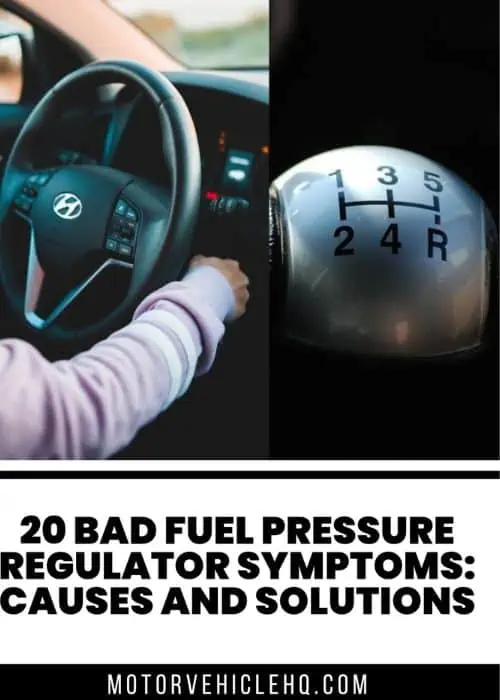

Jim Wicks is the founder of MotorVehicleHQ. With over two decades of experience in the automotive industry and a degree in Automotive Technology, Jim is a certified car expert who has worked in various roles ranging from a mechanic, car dealership manager, to a racing car driver. He has owned more than 20 cars over the past 15 years. Ask him about any vehicle you see on the road and he can tell you the make, model and year. He loves the aesthetics of all things cars, and keeps his vehicles in pristine condition.
In his free time, Jim enjoys getting his hands dirty under the hood of a classic car or taking long drives along the country roads. His favorite car? A 1967 Shelby GT500, a true classic that, according to Jim, “represents the pure essence of American muscle.”
